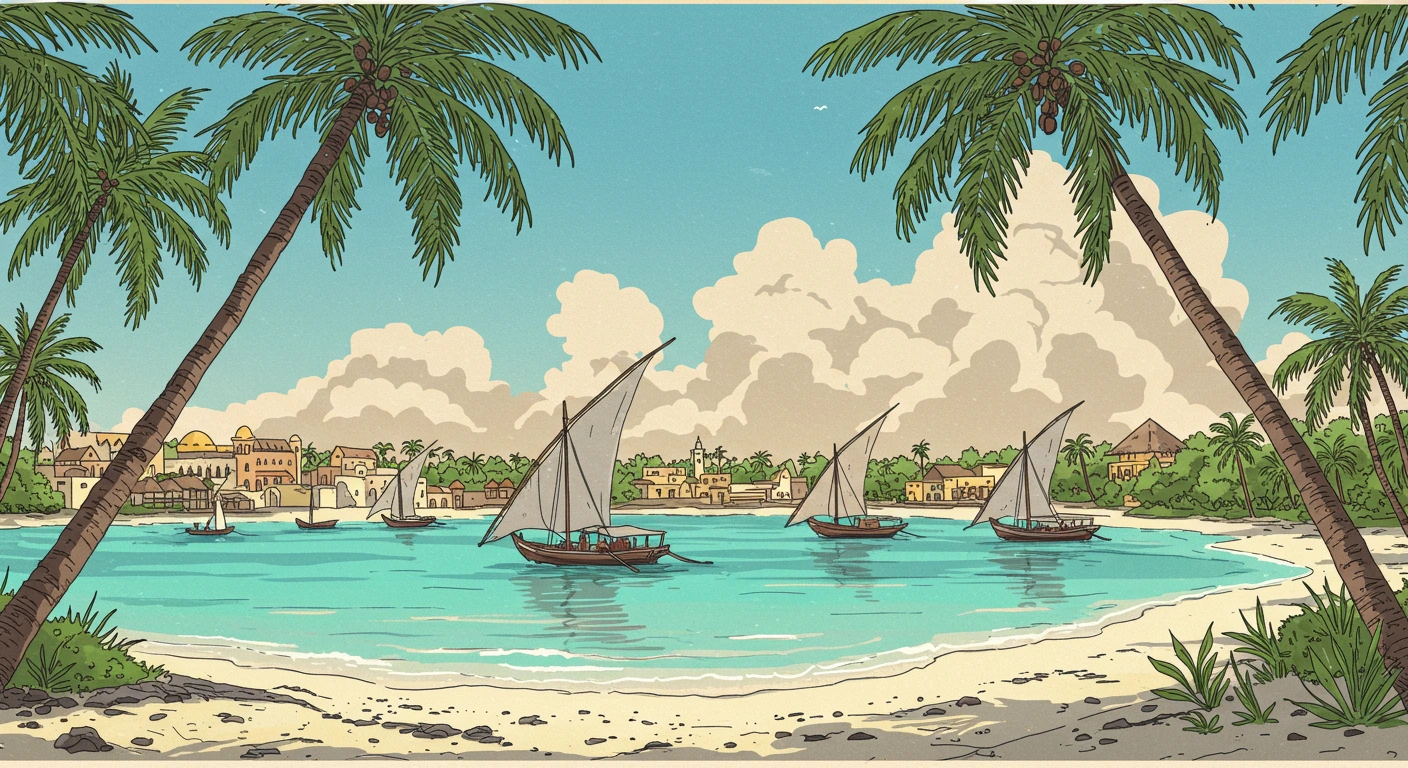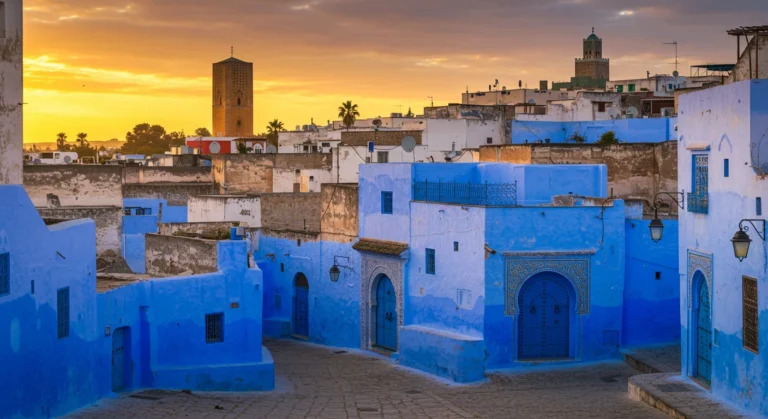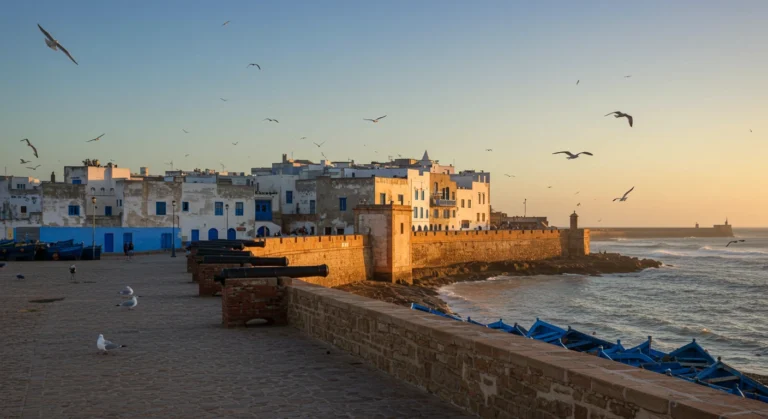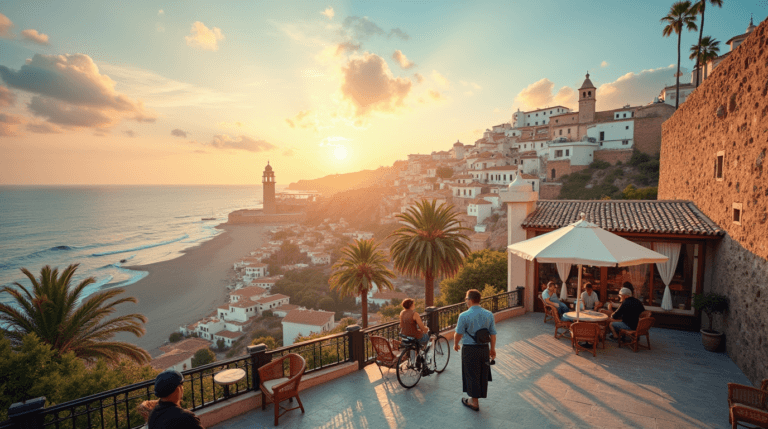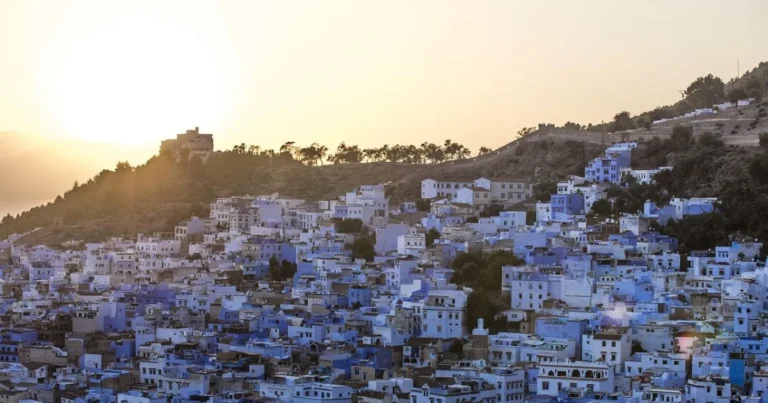best things to do in zanzibar
Table of Contents
Introduction :25 Best Things to Do in Zanzibar | The Ultimate Island Experience
Zanzibar, an archipelago off the coast of Tanzania, is a dream destination that combines pristine beaches, rich cultural heritage, and unforgettable adventures. This semi-autonomous region offers travelers a unique blend of African, Arab, Indian, and European influences that create an atmosphere unlike anywhere else in the world. From exploring historic Stone Town to relaxing on powder-white beaches and diving into vibrant coral reefs, Zanzibar provides experiences that appeal to every type of traveler.
In this comprehensive guide, I’ll share the 25 best things to do in Zanzibar based on my extensive travel experience throughout the islands. Whether you’re planning your first visit or returning to discover more of this East African paradise, these activities will ensure your Zanzibar adventure is truly memorable.
1. Take a Dhow Cruise to Prison Island
Just a short boat ride from Stone Town lies Prison Island (also known as Changuu Island), a place with a fascinating history and natural beauty. Originally intended as a prison for rebellious slaves in the 1860s, the building was never actually used for incarceration and instead became a quarantine station during disease outbreaks.
Today, the island’s main attraction is its colony of giant Aldabra tortoises, some over 150 years old. These gentle giants were gifted from the Seychelles in the late 19th century and now form a protected sanctuary where visitors can observe and even feed these magnificent creatures.
Beyond the tortoises, Prison Island offers excellent opportunities for swimming and snorkeling in crystal-clear waters. The fringing coral reef provides a colorful underwater landscape teeming with tropical fish, making it perfect for beginners and experienced snorkelers alike.
A dhow cruise to Prison Island typically includes time to explore the old prison building, visit the tortoise sanctuary, and enjoy the pristine beaches. The traditional wooden sailboats (dhows) that transport you there are an experience themselves, representing centuries of maritime tradition in the Indian Ocean.
2. Dive Into The Unknown and Snorkel in the Menai Bay Conservation Area
Menai Bay Conservation Area, located on the southwest coast of Zanzibar, protects over 470 square kilometers of mangroves, coral reefs, and seagrass beds. This marine sanctuary offers some of the best snorkeling opportunities on the island, with vibrant coral gardens and an abundance of marine life.
While exploring the warm, clear waters, you might encounter sea turtles gliding gracefully through the currents, colorful reef fish darting among coral formations, and if you’re lucky, even reef sharks patrolling the deeper waters. The diversity of underwater landscapes ranges from shallow coral gardens perfect for beginners to deeper reef walls for more experienced snorkelers.
Many tours to Menai Bay include visits to Uzi Island, a remote area where you can experience authentic rural Zanzibari life. Here, expansive mangrove forests create crucial habitats for juvenile fish and protect the coastline from erosion. The local communities maintain traditional fishing practices that have sustained them for generations.
For the most rewarding experience, join an eco-friendly tour operator that follows responsible snorkeling practices and contributes to conservation efforts in the area. The best time for visibility is during the dry seasons (June to October and December to March) when seas are calmer and water clarity is at its peak.
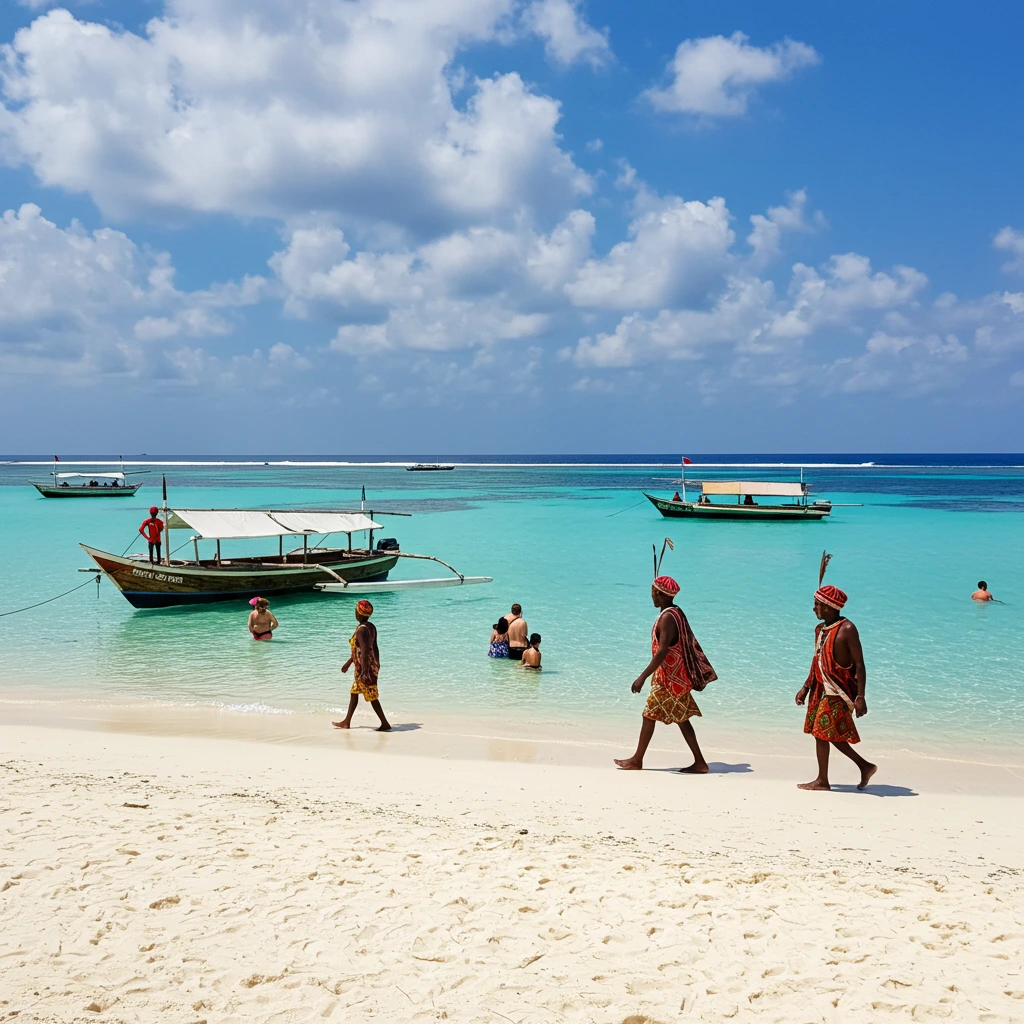
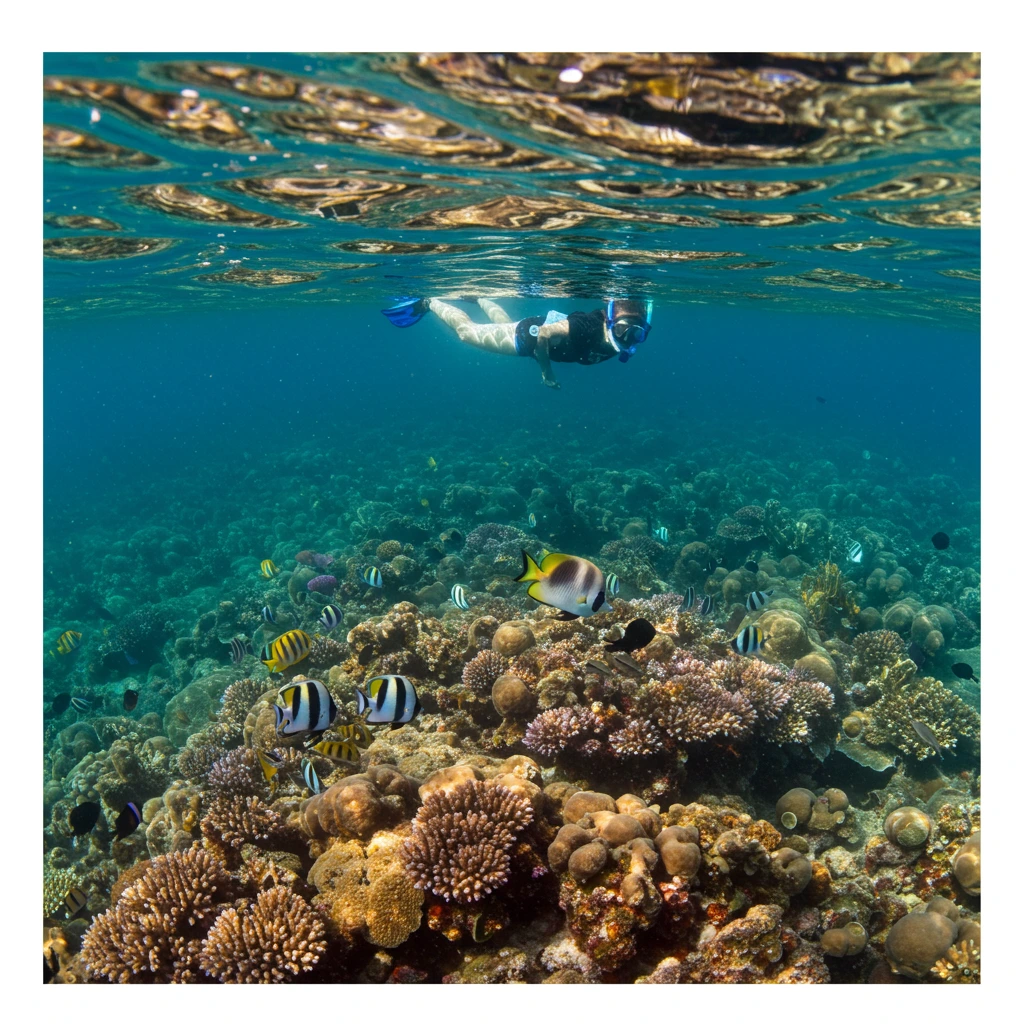
3. Visit an Organic Spice Farm
No visit to the “Spice Islands” would be complete without experiencing the fragrant spice plantations that gave Zanzibar its fame and historical importance. Organic spice farms offer immersive tours where all your senses come alive as you discover how spices are grown, harvested, and prepared.
Walking through these aromatic gardens, you’ll see cloves, cinnamon, cardamom, black pepper, nutmeg, and vanilla growing in their natural state—often quite different from how we encounter them dried and packaged in stores. Knowledgeable guides explain the cultivation processes and demonstrate traditional harvesting techniques that have remained largely unchanged for centuries.
The experience typically includes tasting fresh fruits and spices directly from the source. Biting into a just-picked cinnamon leaf or sampling raw nutmeg provides flavors of extraordinary intensity and freshness. Many tours end with a spice-infused lunch where you can taste how these ingredients transform local dishes.
Popular spice farms like Tangawizi and Jambo offer well-organized tours, though smaller family-run operations often provide more personal experiences. Most farms are located in the central region of Unguja (the main island), making them easily accessible as a half-day trip from Stone Town or beach resorts.
4. Wander Through the Historic City of Stone Town
Stone Town, the historic heart of Zanzibar City and a UNESCO World Heritage Site, is a living museum where centuries of trade, conquest, and cultural exchange have created a unique architectural and cultural landscape. Getting lost in its labyrinthine alleyways is not just inevitable but the best way to experience its charm.
The city’s architecture tells the story of Zanzibar’s diverse heritage, with Arabian-style houses featuring intricately carved wooden doors, European colonial buildings, and Indian influences evident in the decorative balconies and latticework. Many buildings date back to the 19th century when Zanzibar was a flourishing trading hub.
Key attractions include the Old Fort (Ngome Kongwe), built by Omani Arabs in the late 17th century; the House of Wonders (Beit-al-Ajaib), once the tallest building in East Africa; and the ornate Hamamni Persian Baths constructed for Sultan Barghash in the 1880s.
The bustling spice market is a sensory overload where vendors sell fragrant spices, tropical fruits, and local crafts. Nearby, the Anglican Cathedral stands on the former site of the slave market, with a moving memorial to those who suffered during the slave trade that once flourished here.
For the most atmospheric experience, explore early morning when the narrow streets are coming to life, or at sunset when the call to prayer echoes from numerous mosques and golden light bathes the weathered stone buildings.
5. Harvest, Chop, and Taste Your Way to Dinner with a Farm-to-Table Cooking Class
Zanzibari cuisine reflects the island’s position as a crossroads of cultures, with African, Arab, Indian, and Portuguese influences creating a distinctive culinary tradition. A farm-to-table cooking class offers insight into this rich food heritage while teaching practical skills you can take home.
These immersive culinary experiences typically begin with a visit to local markets or farms to select fresh ingredients. You’ll learn to identify ripe tropical fruits, quality seafood, and the freshest spices—knowledge that comes from centuries of trading tradition. Some classes include visits to spice farms where you can harvest ingredients directly.
Under the guidance of local chefs, you’ll prepare traditional dishes like pilau (spiced rice), octopus curry, or mchuzi wa samaki (fish in coconut curry). The cooking process reveals how Zanzibaris have masterfully incorporated spices into their cuisine, using techniques passed down through generations.
The reward for your efforts comes when you sit down to enjoy the meal you’ve prepared, often in beautiful settings like beachfront locations or traditional Zanzibari homes. Popular cooking schools include The Swahili Kitchen and Spice House, though many hotels and resorts now offer similar experiences.
6. Spend the Day with Local Artisanal Women in Jambiani Village
Jambiani, a picturesque village on Zanzibar’s southeast coast, offers visitors a chance to connect with local culture through its women-led seaweed farming and craft industries. This community tourism initiative provides meaningful cultural exchange while supporting sustainable livelihoods.
Seaweed farming emerged as an important economic activity for Zanzibari women in the 1990s, providing independence and income in communities where economic opportunities were traditionally limited. Visitors can wade into the shallow waters during low tide to see how seaweed is planted, tended, and harvested—work that requires both strength and patience.
Beyond seaweed farming, the women of Jambiani maintain traditional craft practices like weaving palm fronds into baskets, mats, and decorative items. Participating in weaving workshops not only teaches you ancient skills but also supports the preservation of these cultural practices.
The village itself is quintessentially Zanzibari, with palm-fringed beaches, coral stone houses, and fishing boats pulled up on the sand. After your cultural activities, there’s plenty of time to relax on the stunning beach, where the shallow turquoise lagoon extends far into the distance.
This experience offers a window into authentic Zanzibari life away from tourist centers and creates meaningful connections with local women who are eager to share their traditions and daily experiences.
7. Snorkel Over Crystal Clear Reefs Around Tumbatu Island
Located off Zanzibar’s northwest coast, Tumbatu Island offers some of the archipelago’s most pristine snorkeling opportunities. This less-visited destination rewards adventurous travelers with extraordinary marine biodiversity and a glimpse into one of Zanzibar’s most traditional communities.
The coral reefs fringing Tumbatu feature exceptional visibility and diverse coral formations that support a rich variety of marine life. Snorkelers can expect to see colorful parrotfish, angelfish, butterflyfish, and sometimes larger species like groupers and reef sharks. The relatively light tourist traffic means marine life here is less disturbed than at more popular sites.
Tumbatu Island itself is home to the Watumbatu people, who maintain distinct traditions and have historically been somewhat isolated from mainstream Zanzibari society. While the island’s villages aren’t typically open to casual tourism, respectful visitors might gain permission from village elders to learn about local customs and history.
The waters around Tumbatu also host several excellent dive sites for certified divers, including walls, drop-offs, and pinnacles with exceptional coral coverage. Whether snorkeling or diving, the area offers a more authentic and less crowded marine experience than many other parts of Zanzibar.
8. Visit the White Sand Beaches in Paje Village
Paje Beach on Zanzibar’s southeast coast represents the postcard image that draws many travelers to the island—powder-white sand, swaying palm trees, and turquoise waters stretching to the horizon. This stunning stretch of coastline offers both relaxation and adventure in equal measure.
At low tide, the ocean recedes dramatically, revealing vast expanses of sand and shallow pools where local women tend their seaweed farms—distinctive geometric patterns visible from above that have become symbolic of Zanzibar’s coastline. This tidal fluctuation creates different beach experiences throughout the day, from wide-open spaces perfect for walking to deep waters ideal for swimming.
Paje has emerged as Zanzibar’s kitesurfing capital, with consistent trade winds from June to September and December to March creating perfect conditions for this exhilarating sport. Several kitesurfing schools offer lessons for beginners and equipment rental for experienced riders.
Despite its growing popularity, Paje maintains a laid-back atmosphere with beachfront restaurants serving fresh seafood and beach bars where you can enjoy cocktails with your toes in the sand. The village itself retains its authentic character, with local life continuing alongside tourism development.
For accommodation, options range from backpacker hostels to boutique hotels, many embracing sustainable practices that respect the fragile coastal environment. Whether you’re seeking action-packed days of water sports or simply want to relax under a palm tree, Paje delivers the quintessential Zanzibar beach experience.
9. Join a Cultural Tour of Nungwi Village
Nungwi, located at Zanzibar’s northernmost tip, offers visitors a fascinating blend of traditional island life and modern tourism development. A cultural tour of this vibrant fishing community provides insights into Zanzibar’s maritime traditions and contemporary coastal culture.
The village is renowned as the center of dhow building in Zanzibar, where skilled craftsmen continue to construct these traditional wooden vessels using techniques passed down through generations. Visiting the boatyard allows you to observe the entire process, from shaping the hull to fitting the distinctive triangular sails that have navigated these waters for centuries.
Early morning visits to Nungwi’s fish market offer a glimpse of daily life as fishermen return with their night’s catch, which is quickly sorted, sold, and distributed to local restaurants and markets. The variety of fish and seafood reflects the rich marine ecosystem that sustains these coastal communities.
While now home to numerous beach resorts, Nungwi still maintains many traditional practices and social structures. Local guides can explain the community’s history, religious customs, and how tourism has transformed life in recent decades.
After exploring the village, Nungwi Beach awaits with its picture-perfect white sand and clear waters that remain deep enough for swimming even at low tide. As the day ends, the beach transforms into one of Zanzibar’s liveliest nightlife scenes, with beachfront bars and restaurants offering entertainment under the stars.
10. Immerse Yourself in the Buzz of the Darajani Market
Darajani Market sits at the heart of Stone Town, serving as the commercial hub where locals shop for daily necessities and specialty items. This bustling marketplace offers travelers an authentic glimpse into everyday Zanzibari life while engaging all the senses.
The market’s spice section is particularly famous, with vendors displaying heaping mounds of cinnamon, cloves, cardamom, and other aromatics that made Zanzibar wealthy during the height of the spice trade. Knowledgeable sellers can explain the culinary and medicinal uses of each spice, and purchasing small amounts makes for perfect souvenirs.
Beyond spices, the market features sections dedicated to fresh produce—tropical fruits, vegetables, and herbs—all sourced from Zanzibar’s fertile countryside. The fish market section provides fascinating cultural insights as fishmongers skillfully fillet their catch and negotiate with seasoned shoppers.
For a truly local experience, visit in the early morning when the market is at its most active and temperatures are cooler. While photographs are generally acceptable in public areas, always ask permission before taking pictures of individuals, especially in more traditional sections of the market.
While Darajani can feel overwhelming with its crowds, aromas, and energetic bargaining, it represents the authentic commercial heart of Zanzibar and offers insights into local life rarely glimpsed in more tourist-oriented settings.
11. Paddle The Nungwi-Kendwa Waters on a Transparent Kayak
For a unique perspective on Zanzibar’s stunning coastal waters, transparent kayaking between the beaches of Nungwi and Kendwa offers an unforgettable experience. These clear-bottomed vessels provide a window into the underwater world while allowing you to explore the coastline from sea level.
Paddling the approximately 3 kilometers between these northern beaches reveals coral formations, tropical fish, and occasionally larger marine creatures like sea turtles, all visible through the transparent hull without getting wet. The shallow, protected waters make this activity suitable even for novice kayakers.
The journey takes you past dramatic limestone cliffs, hidden coves, and pristine beaches that are inaccessible by land. Local operators typically offer guided tours that include information about the marine ecosystem and coastal geology, enhancing the experience with expert knowledge.
Timing your paddle to conclude at Kendwa Beach for sunset creates a particularly magical experience. Unlike many east-facing beaches on Zanzibar, Kendwa’s western orientation means you can watch the sun sink directly into the Indian Ocean, painting the sky in spectacular colors.
Several water sports centers in Nungwi offer transparent kayak rentals or guided excursions, with options ranging from one-hour trips to half-day adventures that include snorkeling stops and beach picnics.
12. Take In the Natural Wonders of the Kuza Cave
Hidden away in a jungle village on Zanzibar’s east coast, Kuza Cave offers a refreshing alternative to beach activities and a glimpse into the island’s geological wonders. This natural limestone cavern features a freshwater pool that has been used by locals for centuries for religious ceremonies and community gatherings.
The cave’s clear blue waters, surrounded by dramatic stalactites and rock formations, create an almost mystical atmosphere. Swimming in the refreshing pool provides welcome relief from Zanzibar’s tropical heat, with sunlight filtering through openings in the cave ceiling to create magical light effects on the water.
According to local legends, the cave once served as a hiding place during tribal conflicts and later as a sanctuary for those escaping slave traders. Some visitors report finding pottery fragments and other artifacts, though these should never be removed from their historical context.
Local guides, often from families with generations of connection to the cave, provide historical context and can explain the spiritual significance of the site to nearby communities. Some tours include demonstrations of traditional healing practices associated with the cave waters.
Located near Jambiani village, Kuza Cave is typically reached through organized tours that include transportation through rural landscapes that offer glimpses of authentic island life away from tourist centers.
13. Visit the Shiraz Ruins on Tumbatu Island
The Shiraz ruins on Tumbatu Island represent one of Zanzibar’s most significant archaeological sites, offering insights into the archipelago’s early Islamic settlement. Dating from the 12th century, these ruins are believed to be remnants of one of the first permanent communities established by Persian settlers from Shiraz (in modern-day Iran).
At the Makutani site, visitors can explore the remains of a mosque, houses, and graves that testify to a once-thriving settlement. The ruins feature classic Shirazi architectural elements, including coral stone construction and distinctive arches, though much has been reclaimed by vegetation over the centuries.
The site holds particular historical importance as evidence of the Persian influence that shaped Swahili coastal culture. These early Shirazi settlers brought Islamic practices, architectural styles, and governance systems that would eventually blend with African traditions to create the unique Swahili civilization.
Visiting requires permission and guidance from local authorities, as Tumbatu Island remains one of Zanzibar’s most traditional communities with its own distinct dialect and customs. A respectful approach and knowledgeable guide are essential for appreciating both the archaeological significance and the contemporary cultural context.
While less visually impressive than other ruins in East Africa, the Shiraz site offers serious history enthusiasts a rare glimpse into the formative period of Zanzibar’s multicultural identity and the beginnings of Swahili coastal civilization.
14. Spend the Day at Starfish Beach in the Blue Lagoon Atoll
Tucked away in the turquoise waters off Zanzibar’s east coast lies the Blue Lagoon Atoll, home to the aptly named Starfish Beach—a hidden paradise accessible only by boat. This secluded sandbank and its surrounding waters offer one of the archipelago’s most unique marine experiences.
The beach’s claim to fame is its extraordinary population of vibrant red, orange, and blue starfish that carpet the ocean floor in remarkable numbers. The shallow, crystal-clear water allows for easy viewing of these fascinating echinoderms against white sand backgrounds, creating postcard-perfect scenes.
Snorkeling in the protected lagoon reveals diverse coral gardens teeming with tropical fish, with the shallow depth and calm waters making it ideal for beginners and families with children. The isolated nature of this spot means marine life here often appears less skittish than at more frequently visited locations.
Responsible visitors remember that starfish are living creatures that should be observed but not removed from the water or handled unnecessarily. Even brief air exposure can damage these sensitive animals, so ethical tour operators emphasize observation rather than interaction.
Most excursions to Starfish Beach include transportation by traditional dhow or modern boat, snorkeling equipment, and often a seafood lunch prepared fresh on a nearby beach. The journey itself through Zanzibar’s eastern lagoons provides magnificent views of the coastline and traditional fishing activities.
15. Sip on Arabica Coffee at Zanzibar Coffee House
Housed in a beautifully restored 19th-century Swahili building in the heart of Stone Town, Zanzibar Coffee House offers much more than excellent coffee—it provides a journey through the island’s architectural heritage and coffee-growing tradition.
The building exemplifies traditional Arabian influence with its central courtyard, intricate plasterwork, and carved wooden elements that have been lovingly preserved. Original features blend with tasteful modern touches to create an atmosphere of timeless elegance that invites lingering over multiple cups.
The coffee served comes primarily from the owners’ plantation on Mount Meru in mainland Tanzania, where high-altitude Arabica beans develop complex flavors under ideal growing conditions. The menu features various preparation methods, from espresso-based drinks to traditional brewing techniques that highlight different aspects of the bean’s character.
For the ultimate experience, head to the rooftop terrace, where comfortable cushions and stunning views across Stone Town’s rooftops create a perfect setting for contemplation or conversation. Early morning visits offer peaceful moments above the awakening city, while afternoon stops provide respite from sightseeing in the historic district.
Beyond coffee, the establishment serves freshly baked pastries and light meals featuring local ingredients, making it a perfect breakfast stop or afternoon retreat. The attached boutique hotel allows guests to fully immerse themselves in the historic atmosphere around the clock.
16. Indulge in Fresh Seafood at The Rock Restaurant
Perched dramatically on a rocky outcrop in the Indian Ocean, The Rock Restaurant has become one of Zanzibar’s most photographed landmarks and a bucket-list dining experience for visitors. Located off Michanwi Pingwe beach on the island’s east coast, this unique establishment is surrounded by turquoise waters that change with the tides.
The restaurant’s appeal begins with its extraordinary setting. During low tide, guests can walk across the sandy seabed to reach the entrance, while high tide transforms it into an island accessible only by traditional wooden boat or by wading through shallow water—adding adventure to your dining experience.
Inside, the intimate space accommodates just 12 tables in a rustic-chic atmosphere featuring driftwood elements and panoramic ocean views through open shutters. The outdoor terrace provides additional seating where diners can feel the sea breeze while watching traditional dhows sail past.
The menu focuses on fresh local seafood prepared with Italian influences—a nod to the restaurant’s founders. Signature dishes include lobster pasta, octopus salad, and the daily catch served with coconut rice. For the complete experience, pair your meal with South African wines or tropical cocktails featuring local fruits and spices.
Reservation is essential, particularly during high season, and diners should check tide tables when planning their visit. While premium-priced by Zanzibar standards, the combination of spectacular setting and quality cuisine creates a memorable splurge for special occasions.
17. Get To Know the Culture with a Traditional Healer
For travelers seeking deeper cultural understanding, meeting with a traditional healer (mganga in Swahili) offers insights into Zanzibar’s spiritual practices and indigenous knowledge systems that have sustained communities for centuries before modern medicine arrived.
Traditional healing in Zanzibar represents a complex blend of Islamic influences, African traditional practices, and local herbal knowledge. Healers treat both physical ailments and spiritual concerns using plants, herbs, and rituals passed down through generations, often within family lineages.
During visits arranged through respectful local guides, healers might demonstrate how they identify medicinal plants, prepare traditional remedies, and perform diagnostic rituals. Some share knowledge about common treatments for everyday ailments using locally available ingredients—information that reflects deep ecological understanding of the islands’ natural resources.
While some aspects of traditional healing involve spiritual elements that might seem unfamiliar to Western visitors, these practices represent important cultural heritage and continue to play significant roles in many Zanzibaris’ healthcare choices, often alongside modern medicine.
Ethical cultural encounters should involve fair compensation for the healer’s time and knowledge, respect for any restrictions on photography or participation, and an attitude of cultural appreciation rather than judgment. Private arrangements through knowledgeable guides typically create more authentic experiences than large group tours.
18. Take In the Peace and Quiet from the Nakupenda Sandbank
“Nakupenda” means “I love you” in Swahili—an appropriate name for this breathtaking sandbank that emerges from the ocean at low tide near Stone Town. This pristine stretch of sand surrounded by crystal-clear turquoise water creates one of Zanzibar’s most magical natural settings.
Visiting Nakupenda offers a Robinson Crusoe-like experience of standing on an undeveloped island that appears and disappears with the rhythms of the tide. The brilliant white sand against the azure water creates a striking natural palette that photographers find irresistible.
Most excursions to the sandbank depart from Stone Town by traditional dhow or modern boat, with journeys timed around optimal tide conditions. Tours typically include several hours on the sandbank for swimming, sunbathing, and snorkeling in the surrounding waters, which teem with colorful fish and occasional sea turtles.
Many operators enhance the experience with fresh seafood barbecues prepared on the spot, featuring the catch of the day grilled with local spices and served with tropical fruits. Dining with your feet in the sand while surrounded by panoramic ocean views creates unforgettable memories.
For the most peaceful experience, book early morning tours that arrive before larger groups, allowing moments of solitude on this remarkable natural formation. Remember that there’s no natural shade on the sandbank, so sun protection is essential for enjoying this paradise comfortably.
19. Sip a Cocktail (or mocktail) at Africa House Hotel
The Africa House Hotel, housed in a historic building that once served as an English Gentleman’s Club and later as the residence for Sultan Bargash’s harem, offers one of Stone Town’s most atmospheric settings for sunset drinks. Its oceanfront location and rich history make it a cultural experience beyond simple refreshment.
The hotel’s Sunset Bar occupies a wide terrace overlooking the Indian Ocean, providing panoramic views across the water to distant islands and the constant parade of traditional dhows with their distinctive triangular sails. As the sun begins its descent, the sky transforms through spectacular oranges and pinks, creating a daily natural spectacle.
The building itself represents an important piece of Zanzibar’s colonial history, with architecture that blends European, Arabic, and Indian influences—characteristic of Stone Town’s unique cultural fusion. Interior spaces feature original details including carved wooden elements and traditional Zanzibari doors.
The drink menu offers both alcoholic options (unusual in predominantly Muslim Zanzibar) and creative non-alcoholic alternatives featuring local ingredients like ginger, lemongrass, and tropical fruits. Light snacks and meals are also available, though many visitors come specifically for the sunset ambiance.
While the Africa House attracted well-heeled travelers in colonial times, today its bar welcomes visitors across budget ranges—you needn’t be a hotel guest to enjoy its legendary sunset views. Arriving 30-45 minutes before sunset ensures securing prime viewing spots during peak season.
20. Sail on a Traditional Dhow at Sunset
Few experiences capture Zanzibar’s romantic essence like sailing on a traditional wooden dhow as the sun sinks into the Indian Ocean. These handcrafted vessels with their distinctive lateen sails have plied these waters for centuries, carrying trade goods between Africa, Arabia, and India long before tourism discovered these shores.
Sunset dhow cruises typically depart from Stone Town, Nungwi, or other coastal villages in the late afternoon, timing the journey to catch the most spectacular light. As you glide silently across calm waters, the setting sun transforms the sky and sea into a canvas of gold, crimson, and purple hues that reflect off the water’s surface.
Most cruises include refreshments ranging from simple soft drinks to elaborate spreads of local fruits, snacks, and sometimes wine or beer. The gentle motion of the boat, the creaking of wooden timbers, and the flap of the canvas sail create a multisensory experience that connects you to Zanzibar’s maritime heritage.
Beyond the visual spectacle, these cruises offer insights into traditional sailing techniques as skilled captains navigate using knowledge passed through generations. Some tours include opportunities to help hoist the sail or take the tiller under guidance from experienced crew members.
While larger operators offer standardized experiences with modern amenities, smaller family-owned dhows often provide more authentic connections to local maritime traditions. Either way, this quintessential Zanzibar experience combines natural beauty, cultural heritage, and peaceful relaxation.
21. Follow a Street Food Tour Through Stone Town
Stone Town’s winding alleys hide culinary treasures that reflect centuries of cultural exchange between Africa, the Middle East, India, and Europe. A guided street food tour navigates this complex gastronomic landscape, introducing visitors to authentic flavors beyond tourist restaurants.
The famous Forodhani Gardens night market serves as a natural starting point, where vendors grill fresh seafood skewers, prepare Zanzibar pizza (a stuffed crepe-like snack), and serve sugar cane juice pressed before your eyes. However, the most insightful tours venture beyond this tourist hotspot into residential neighborhoods where locals shop and eat.
Urojo soup (Zanzibar mix)—a tangy potato soup topped with crispy fritters, chutney, and various condiments—represents one of the island’s most beloved street foods, reflecting both Indian and African influences. Other must-try items include vitumbua (rice flour pancakes), mishkaki (marinated meat skewers), and samosas with distinctly local spicing.
Beyond the food itself, these tours provide cultural context about ingredients, cooking techniques, and the historical factors that shaped Zanzibar’s unique cuisine. Knowledgeable guides explain how the spice trade, colonial history, and Islamic dietary practices have influenced local food traditions.
The social aspect of street food culture—gathering around communal tables, eating with hands from shared plates, and engaging with vendors—offers valuable insights into everyday Zanzibari life rarely experienced in more formal dining settings.
22. Soar Through the Sky with a Tandem Skydiving Experience
For adrenaline seekers looking to combine extreme adventure with unparalleled views, tandem skydiving offers a heart-pounding perspective on Zanzibar’s stunning coastline. This relatively new addition to the island’s adventure tourism options provides unforgettable memories for thrill-enthusiasts.
Jumps typically take place over the northern beaches, particularly Nungwi, where the contrast between white sand, turquoise lagoons, and deep blue ocean creates spectacular aerial vistas. The experience begins with a short training session covering safety procedures and what to expect during the jump.
As the aircraft climbs to approximately 10,000 feet, anticipation builds along with breathtaking views of the entire archipelago coming into focus—the main island’s irregular coastline, smaller surrounding islands, and the endless expanse of the Indian Ocean. At jumping altitude, you’re securely attached to your instructor before taking the ultimate leap.
The initial freefall at 120 mph delivers an incomparable rush that gradually transitions to peaceful floating once the parachute deploys. During the gentle descent under canopy, your instructor points out landmarks including coral reefs, traditional villages, and luxury resorts from this privileged perspective.
Most jumps conclude with a beach landing on Nungwi’s soft sand, where friends can photograph your arrival and celebration drinks often await. While premium-priced, this bucket-list experience combines extreme sport with unmatched scenic beauty in ways few other activities can match.
23. Race Through Local Farms and Villages on a Quadbike
Exploring Zanzibar’s rural interior by quadbike (ATV) offers an exhilarating alternative to beach activities while providing access to authentic villages and landscapes rarely seen by conventional tourists. These guided excursions reveal a completely different side of the island away from coastal developments.
Typical routes wind through small farming communities where cassava, sweet potatoes, bananas, and spices grow in lush fields. The journey passes coconut plantations, mango groves, and rice paddies that sustain local populations, offering glimpses into agricultural traditions that remain largely unchanged for generations.
Village passages allow interaction with rural communities, where children often run alongside bikes waving enthusiastically. Some tours include stops at community projects, small-scale industries like coconut oil production, or local schools where cultural exchange benefits both visitors and residents.
The varied terrain—from packed dirt tracks to sandy paths through palm forests—creates an engaging driving experience suitable for beginners after basic instruction. Tours typically include safety gear, orientation, and guides who ensure responsible interactions with communities and environments.
For maximum comfort, morning departures avoid the most intense midday heat, though afternoon tours often include spectacular lighting for photography as the sun lowers. Most operators offer options ranging from two-hour introductory experiences to full-day adventures covering greater distances.
24. Spend the Day at the Chumbe Island Coral Park
Just a few miles southwest of Stone Town lies Chumbe Island, a pioneering marine conservation project that combines ecosystem protection with sustainable tourism. This private nature reserve offers visitors extraordinary snorkeling, environmental education, and eco-friendly accommodations in one compelling package.
The island’s protected coral reef sanctuary features over 200 coral species and 400 fish species, creating one of East Africa’s most pristine reef ecosystems. Unlike many degraded reefs worldwide, Chumbe’s corals remain vibrant and healthy thanks to strict conservation measures implemented since the early 1990s.
Guided snorkeling tours with marine biologists reveal this underwater wonderland, where you might encounter butterfly fish, parrotfish, octopuses, and occasionally sea turtles. The knowledgeable guides explain coral ecology and conservation challenges facing marine ecosystems worldwide.
On land, the island’s forest reserve protects rare species including the enormous coconut crab—the world’s largest land-living arthropod—and supports important seabird nesting sites. Nature trails wind through this unique ecosystem with interpretive signs explaining its ecological significance.
Day trips include boat transfers, snorkeling equipment, guided reef and forest tours, and delicious Zanzibari meals prepared at the visitor center. For those wishing to extend their stay, seven eco-bungalows offer sustainable luxury with solar power, composting toilets, and rainwater collection systems that minimize environmental impact.
25. Sample Traditional Food at the Forodhani Gardens Night Market
As evening falls in Stone Town, the seafront Forodhani Gardens transforms into a bustling open-air food market where dozens of vendors set up grills, tables, and displays offering a tantalizing array of local specialties. This nightly gathering has become both an important social hub for locals and a must-visit attraction for travelers.
The market’s signature offering is Zanzibar pizza—a thin dough filled with your choice of ingredients (often minced meat, onions, peppers, and an egg) then folded and fried to create a savory crepe-like snack. Vegetarian versions featuring cheese, vegetables, or chocolate-banana combinations cater to diverse preferences.
Seafood features prominently, with vendors displaying the day’s catch on ice before grilling selections to order. Skewers of kingfish, tuna, prawns, lobster, and octopus come fresh from the Indian Ocean to your plate, typically served with coconut bread and a spicy sauce.
Urojo soup, a Zanzibari staple, offers complex flavors from a tangy mango-tamarind broth topped with potato fritters, cassava crisps, chutney, and boiled eggs. This satisfying street food exemplifies the blend of African, Indian, and Arabian influences that characterize local cuisine.
For refreshment, freshly pressed sugar cane juice—often enhanced with ginger and lime—provides sweet hydration, while spiced coffee and chai tea offer warm alternatives during cooler evenings.
While prices at Forodhani exceed typical local rates, they remain reasonable by international standards. Selecting vendors with high turnover and good hygiene practices minimizes health risks, allowing you to safely enjoy this quintessential Zanzibari experience.
The market typically opens around sunset and continues until late evening, with peak hours between 7-9 PM when both locals and tourists gather to dine under the stars. The atmosphere combines the energy of a bustling marketplace with the relaxed vibe of an outdoor dining room, making it perfect for people-watching.
Beyond food, the gardens themselves offer a pleasant setting with historical significance, having been recently renovated to highlight their original colonial-era design. The seafront location provides cooling breezes and views of traditional dhows returning to harbor as the sun sets.
For the most authentic experience, venture beyond the front row vendors who cater primarily to tourists, and explore the stalls where locals gather. Engaging with vendors about their specialties often leads to recommendations for less obvious delicacies that represent true local cuisine.
Conclusion: Making the Most of Your Zanzibar Experience
Zanzibar offers a remarkable blend of natural beauty, cultural richness, and adventure that few destinations can match. From exploring ancient Stone Town to relaxing on pristine beaches and diving into vibrant underwater worlds, the archipelago rewards travelers with unforgettable experiences at every turn.
The 25 activities outlined in this guide merely scratch the surface of what’s possible in this East African paradise. Whether you seek historical insights, cultural connections, adrenaline rushes, or simply perfect beaches, Zanzibar delivers with its unique combination of African, Arab, Indian, and European influences.
For the most rewarding visit, consider these final tips:
Timing matters: The dry seasons (June-October and December-March) offer the best weather conditions, though shoulder seasons can provide good value with fewer crowds.
Respect local customs: Zanzibar is predominantly Muslim, so modest dress is appreciated, particularly in Stone Town and villages away from beach resorts.
Learn a few Swahili phrases: Simple greetings and thank-yous go a long way in building connections with local people.
Support sustainable initiatives: Choose tour operators and accommodations committed to environmental and cultural preservation.
Slow down: Rather than rushing to check activities off a list, allow time to absorb Zanzibar’s unique pace and atmosphere.
Whether you’re planning a dedicated trip to Zanzibar or including it as part of a larger East African adventure, these islands will captivate you with their beauty, history, and the warm hospitality of their people. As they say in Swahili, “Karibu Zanzibar” – Welcome to Zanzibar!

